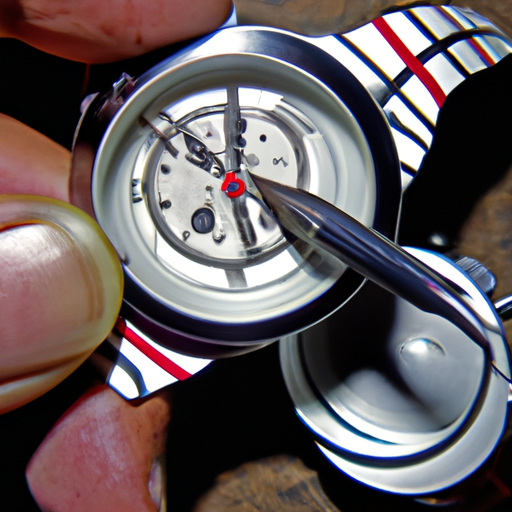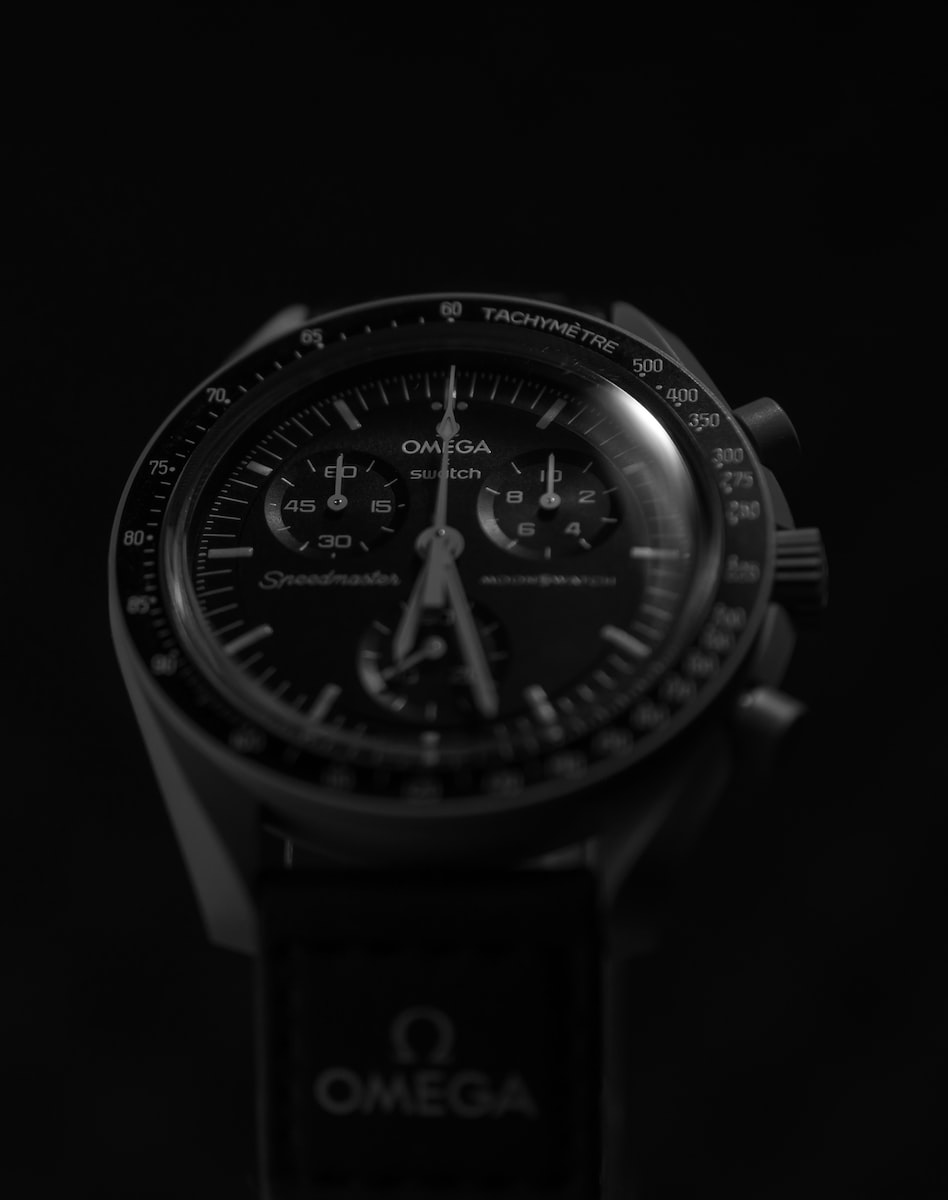What Is A Tachymeter And How Does It Work On A Watch?
A tachymeter is a feature found on some watches that allows the wearer to measure speed or distance based on time. It works by measuring the time it takes for an event to occur, such as a car passing a certain point, and then converting that time into units of speed or distance. The tachymeter scale is usually printed around the bezel of the watch and consists of numbers from 0-60. To use it, one must start timing when an event occurs and stop timing when it occurs again. The number indicated on the scale at this point will be equal to the rate at which the event occurred (in units per hour). For example, if you were timing how long it took for a car to travel one mile and you stopped timing after 30 seconds had elapsed, then you would look at your tachymeter scale and see that 30 seconds equates to 120 miles per hour (mph).
How To Read The Tachymeter Scale On Your Watch
A tachymeter scale is a feature found on many watches that allows the wearer to measure speed or distance based on time. The scale is usually located around the bezel of the watch and consists of a series of numbers, typically ranging from 500 to 60. To use the tachymeter scale, start by timing an event for a fixed amount of time, such as 30 seconds. Then look at the number that corresponds with that amount of time on the tachymeter scale. This number will represent either speed (in kilometers per hour) or distance (in kilometers).
For example, if you were timing a car going around a track for 30 seconds and saw that it corresponded to 50 on the tachymeter scale, then you would know that it was traveling at 50 kilometers per hour. Similarly, if you were measuring how far someone had run in 30 seconds and saw that it corresponded to 1 kilometer on the tachymeter scale, then you would know they had run 1 kilometer in 30 seconds.
The tachymeter scale can be used for any event where speed or distance needs to be measured over a fixed period of time. It is an invaluable tool for anyone who needs accurate measurements quickly and easily without having to use complex calculations or equipment.
Tips For Using A Tachymeter To Measure Speed Or Distance
1. Before using a tachymeter, make sure to read the instructions carefully and understand how it works. Familiarize yourself with the different parts of the device and how they interact with each other.
2. When measuring speed or distance, ensure that you have a clear line of sight between your starting point and end point. This will help you accurately measure the distance or speed you are trying to calculate.
3. Make sure that your tachymeter is properly calibrated before use so that it can provide accurate readings when measuring speed or distance.
4. When measuring speed, start timing as soon as you begin moving and stop timing when you reach your destination in order to get an accurate reading from your tachymeter.
5. When measuring distance, make sure to take into account any obstacles such as hills or curves in order to get an accurate reading from your tachymeter for the total distance traveled over a given period of time or for a specific route taken by vehicle or person traveling on foot/bicycle etc..
6. After taking measurements with your tachymeter, double-check all readings before recording them in order to ensure accuracy of results obtained from using this device for measurement purposes
Different Types Of Tachymeters And Their Uses In Watches
A tachymeter is a type of scale used in watches to measure speed or distance. It is typically found on the bezel of chronograph watches and can be used to calculate average speed over a given distance. The tachymeter scale is usually marked with numbers from 0 to 60, which correspond to units per hour (km/h or mph). By timing how long it takes an object to travel a known distance, the user can then read off the average speed from the tachymeter scale.
There are several different types of tachymeters available for use in watches. The most common type is the linear tachymeter, which features a linear scale that runs around the circumference of the watch’s bezel. This type of tachymeter allows for quick and easy calculations by simply reading off the number corresponding to your desired unit per hour measurement. Another popular type is called a logarithmic tachymeter, which features an exponential curve instead of a linear one. This type requires more complex calculations but provides more accurate results than its linear counterpart.
Tachymeters are useful tools for measuring speed or distance when time constraints are present, such as when driving on highways or running races. They can also be used in sports such as golfing and skiing where knowing your average speed over certain distances can help you improve your performance and technique. Additionally, they are often used by pilots who need to know their airspeed quickly and accurately during flight operations.
In summary, there are several different types of tachymeters available for use in watches that allow users to quickly calculate their average speeds over certain distances without having access to complex instruments like stopwatches or calculators. Tachymeters provide an invaluable tool for those who need accurate measurements within tight time constraints such as pilots flying aircrafts or athletes competing in races and other sporting events where every second counts!
Troubleshooting Common Issues With Your Watch’s Tachymeter
A tachymeter is a feature found on many watches that allows the wearer to measure speed or distance based on time. It is an important tool for athletes, pilots, and other professionals who need to track their performance. However, like any other watch feature, the tachymeter can experience issues from time to time. Here are some of the most common problems and how to troubleshoot them.
First, make sure that your watch’s battery is charged and functioning properly. If it isn’t, then your tachymeter won’t work correctly either. Replace the battery if necessary or take it in for service if you don’t feel comfortable doing it yourself.
Second, check that all of the settings on your watch are correct for using a tachymeter. Make sure that you have selected “Tachymetric Mode” in order for the feature to work properly. Also ensure that you have set up any additional features such as lap timers or split times correctly so they don’t interfere with your measurements.
Thirdly, make sure that you are using the correct scale when measuring speed or distance with your tachymeter; different scales will give different results depending on what type of measurement you are taking (e.g., kilometers per hour versus miles per hour).
Finally, if all else fails then try resetting your watch completely by pressing and holding down its power button until it turns off completely before turning it back on again; this should reset all settings back to their default values which may help resolve any issues with your tachymeter not working correctly due to incorrect settings being applied previously by mistake or otherwise changed without notice over time due to software updates etc..
If none of these steps resolve the issue then contact customer support at either where you purchased your watch from originally or directly from its manufacturer as they may be able to provide further assistance in diagnosing and resolving any remaining problems with its operation more effectively than can be done through self-help methods alone
Q&A
1. What is a tachymeter?
A tachymeter is a scale on the bezel of a watch that can be used to measure speed or distance based on time.
2. How do I use a tachymeter?
To use a tachymeter, start the chronograph when an object passes the starting point and stop it when it passes the finishing point. The number indicated by the second hand will correspond to the speed or distance traveled in units per hour (or other unit of measurement).
3. What are some common uses for a tachymeter?
Common uses for a tachymeter include measuring average speeds, calculating distances traveled, and determining lap times during races or other timed events. It can also be used to measure RPMs in engines and machinery.
4. Are there any special considerations when using a tachymeter?
Yes, accuracy is important when using a tachymeter so make sure you start and stop at exactly the right points in order to get an accurate reading. Also, make sure you know what unit of measurement your watch’s scale is calibrated for (e.g., kilometers per hour).
5. Is there anything else I should know about using my watch’s tachymeters?
Yes! Make sure you read your watch’s manual carefully before attempting to use its features as each model may have slightly different instructions for how to operate its functions correctly and safely!

